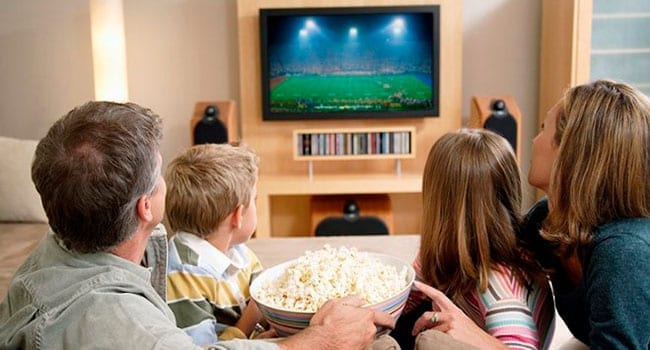 While the COVID-19 debate over lockdowns continues, there seems to be a consensus that professional sports leagues will open this summer to complete their 2019-20 playoffs or, for Major League Baseball, to start the season that was suspended in March.
While the COVID-19 debate over lockdowns continues, there seems to be a consensus that professional sports leagues will open this summer to complete their 2019-20 playoffs or, for Major League Baseball, to start the season that was suspended in March.
There are debates about how much players should make (MLB is at odds with the players’ union), precautions that ought to be taken and the sheer logistics of resuming a season in ‘pod cities’ cleared for such activity.
With the news that California and New York might open up for no-spectator play in early June (California has 19 professional sports teams), the range of venues has greatly expanded.
The National Hockey League seems to be aiming at pods in Western Canada, the U.S. northeast and possibly California to do a 24-team playoff format.
The National Basketball Association is talking about completing its season with a similar scheme in the Orlando area’s Disney facilities. Players will be tested and sequestered in local hotels for the balance of the season or until they’re eliminated from contention.
The National Football League, which doesn’t have to start until September, is still hoping to have teams play all their games in their home parks. There will be no international travel for the NFL this season.
Wherever they choose to play, it looks like a Stanley Cup and an NBA title will be awarded, perhaps as late as Labour Day. The 2020-21 regular seasons would resume in November, possibly around U.S. Thanksgiving.
How these sports will look when we flip on the flat screen is a burning question. Many seem resigned to the no-spectators format. To see how that looks and (doesn’t) sound, tune into a Bundesliga soccer match from Germany. It more resembles a post-work beer league for atmospherics than an elite sport.
NASCAR has been racing without crowds but, frankly, who can hear fans above the roar of the engines?
Different schemes are being discussed for how to seed the stands with some spectators without causing intimacy problems. Ohio State University has talked about crowds of 25,000 to 30,000 in its 100,000-seat stadium for Buckeyes football. NFL teams are drawing up mock seating plans to allow for social distancing, and to get fans into luxury boxes and seats.
More to the point, how will the sports themselves look on the field?
Last week, MLB posted possible guidelines that include players showing up at the park dressed in their uniforms, no showering after the game, no shared rides, infielders keeping distance from base runners, no mascots and – the issue that got the most blow-back – no spitting! (This would send many baseball players into therapy.)
These tactile rules have been taken as gospel by the lockdown mafia, which heard that the virus can survive for up to three days on some surfaces. The latest guidance from the ‘experts’ is that COVID-19 is airborne and requires sustained contact indoors of over 15 minutes with a source of the virus. Both the NBA and NHL play indoors so they logically might have a greater risk under this condition.
This new spread potential doesn’t seem to have caught up with many sports leagues that are still working from the March script of all-death, all-the-time from touching a foreign surface. (You will also not get the virus on the beach or in an ocean unless you French kiss there for a quarter-hour.) When this does register with certain leagues, it might make some rethink on the prohibitions on casual contact.
As well, the information now available makes it clear that the virus is very selective. In Canada at least, no one under 20 has died of COVID-19. Few healthy people under 60 have been infected. Far fewer hospitalized.
Likewise, unless you’re over 60, or have a comorbidity or work in the ICUs with victims, your chances of avoiding the worst of the virus are 99.99 per cent. For most people under 65, that’s no more dangerous than driving 13 to 101 miles a day. Or a common flu season.
Even in the New York City/New Jersey hub, which has slightly more than a 25 per cent infection rate, 99.98 per cent of all people in the city under 45 survived.
So one size does not fit all when it comes to protecting players and fans in the stands.
That might finally influence nervous sports commissioners to open the doors a little wider. Then again, it might not.
Some people seem to have grown accustomed to the inconvenience of locking down. (As Billy Crystal says, “I was just getting ready to not go out.”) Others are rigid with fear thanks to the media scare onslaught – no matter what the statistics say. No amount of data is getting them out of their houses, perhaps until they die.
That means they’ll need something on the TV to watch. Like sports. It seems simple enough.
But in this deadly spring of 2020, where the ghouls at the New York Times try to conflate COVID-19 victims with war dead for Memorial Day weekend, nothing is ever simple.
Troy Media columnist Bruce Dowbiggin career includes successful stints in television, radio and print. A two-time winner of the Gemini Award as Canada’s top television sports broadcaster, he is also the publisher of Not The Public Broadcaster.
The views, opinions and positions expressed by columnists and contributors are the author’s alone. They do not inherently or expressly reflect the views, opinions and/or positions of our publication.

